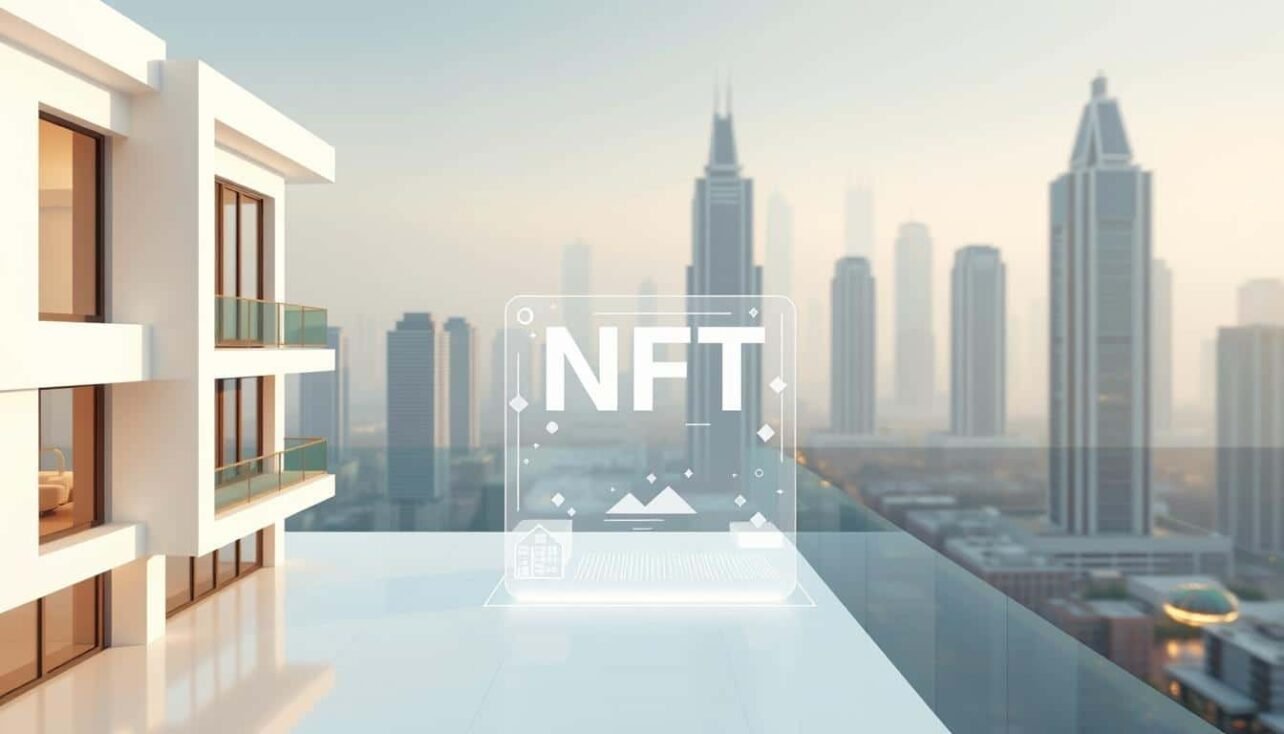The way people engage with high-value assets is undergoing a radical shift. Blockchain advancements now enable shared participation in premium properties through divisible digital shares. This approach breaks down financial barriers, letting diverse stakeholders collectively benefit from opportunities once reserved for elite buyers.
By converting physical properties into blockchain-based tokens, markets gain unprecedented flexibility. Global participation becomes possible, as digital platforms erase geographical limitations. Even modest contributors can now build diversified portfolios through micro-investments in commercial or residential ventures.
Liquidity improvements stand out as a game-changer. Traditional markets often trap capital for years, but tokenized shares can trade on secondary markets within minutes. This fluidity attracts new demographics while maintaining robust security protocols inherent to decentralized ledgers.
Key Takeaways
- Shared digital ownership models democratize access to premium properties
- Blockchain technology ensures transparent transaction records and asset authenticity
- Tokenized markets enable 24/7 trading with reduced entry costs
- Portfolio diversification becomes achievable through micro-investments
- Regulatory frameworks continue evolving alongside these innovations
Exploring the Evolution of Digital Asset Ownership
Blockchain’s impact on asset control extends beyond currency to unique digital tokens. These innovations have transformed how creators and collectors interact with rare items, creating new economic models across industries.
https://www.youtube.com/watch?v=lVk0FkNB4k0
Defining NFTs and Their Role in Digital Investments
Non-fungible tokens represent exclusive rights to digital or physical items through blockchain verification. Unlike cryptocurrencies, each token holds distinct value and cannot be replicated. This uniqueness makes them ideal for authenticating rare art, music, or virtual goods.
Early adoption in creative fields changed revenue streams for artists. Musicians now release limited-edition albums as verifiable tokens, while digital painters earn royalties automatically through smart contracts. Gaming platforms leverage this technology to let players trade unique gear across different virtual worlds.
The Shift From Whole Tokens to Shared Stakes
High-value tokens initially required full purchase, limiting participation. A $500,000 digital artwork remained inaccessible to most enthusiasts. Shared stake models emerged to break down these financial barriers.
Platforms now enable groups to collectively own premium tokens. This approach spreads risk while maintaining profit potential. Secondary markets flourish as partial owners trade their shares freely, creating dynamic pricing structures previously unseen in digital collectibles.
Understanding the Fundamentals of Fractional NFTs
Breaking down barriers, shared stakes empower collective control of premium digital items. This model allows groups to claim stakes in high-value items while preserving their inherent uniqueness. Unlike traditional models, every participant’s stake remains individually verifiable and traceable.
Verification Through Blockchain Technology
Blockchain networks authenticate each stake using immutable records. These systems assign unique identifiers to partial stakes, linking them to original items. Smart contracts govern terms automatically, executing predefined rules for profit sharing and stake management.

Advantages of Shared Stakes
Shared stakes transform market dynamics. Smaller investments let diverse groups access blue-chip items, from digital art to virtual land parcels. More traders enter markets, boosting activity and price discovery.
Secondary markets thrive as micro-stakes circulate freely. Collective governance emerges through voting mechanisms tied to stakes. This collaboration often leads to strategic decisions that maximize asset value over time.
The Emergence of Tokenized Real Estate
Modern property markets are undergoing a digital revolution through blockchain integration. Traditional models face disruption as physical buildings become divisible digital assets. This shift enables broader participation while preserving core ownership principles.

How Traditional Property Markets Adapt to Digital Innovation
Blockchain converts physical locations into tradeable digital shares through special purpose vehicles. Instead of paper certificates, stakeholders receive crypto tokens representing legal claims. These digital certificates live on decentralized ledgers, enabling instant transfers across borders.
Democratizing access stands out as the primary benefit. A commercial tower in Miami can now have hundreds of global stakeholders. Minimum investments drop from six figures to amounts accessible for casual participants.
Three structural advantages redefine market dynamics:
- 24/7 trading platforms replace slow paperwork processes
- Automated royalty distribution via smart contracts
- Transparent valuation data from real-time transactions
Geographic limitations dissolve as Tokyo-based buyers acquire stakes in Austin apartments. Developers gain faster capital access while managing risks through diversified backers. Portfolio management evolves with tools for tracking multiple properties through unified dashboards.
Fractional NFT Ownership Tokenization Real Estate Investment Strategies
Innovative financial models are merging physical and digital value streams through advanced ledger systems. Special Purpose Vehicles (SPVs), typically structured as LLCs, now serve as bridges between conventional structures and blockchain-enabled frameworks. These entities hold physical properties while issuing digital certificates representing proportional stakes.
Strategic Portfolio Construction
Market participants can now spread capital across multiple property categories through micro-stakes. A single portfolio might combine:
- Urban residential complexes in growing metros
- Industrial warehouses near transportation hubs
- Mixed-use developments in tourist destinations
Geographic diversification becomes effortless as digital platforms erase location-based barriers. Investors in Chicago can simultaneously back Tokyo office towers and Lisbon vacation rentals. Risk management improves through exposure to varied economic cycles and regulatory environments.
Automated agreements execute critical functions without intermediaries. Dividend distributions occur on predefined schedules, while transfer restrictions enforce regulatory compliance. This system maintains legal integrity while accelerating transaction speeds traditionally slowed by manual processes.
Global accessibility reshapes market participation dynamics. Previously exclusive deals now welcome stakeholders at various commitment levels. Transparent valuation metrics derived from real-time trading activity provide clearer insights than traditional appraisal methods.
Creating Liquidity and Accessibility Through Fractional Ownership
Digital innovation reshapes how people build wealth through physical holdings. Shared stake models dismantle financial gatekeeping, letting diverse participants engage with premium opportunities previously locked behind high capital requirements.

Lower Entry Barriers for Diverse Investors
Minimum commitments now start at hundreds instead of millions. This shift invites first-time participants and seasoned players alike. A retail worker can back a Miami high-rise while a tech professional diversifies into Tokyo retail spaces.
Property types available through micro-stakes include:
- Multifamily apartment complexes
- Industrial storage facilities
- Commercial development projects
Secondary markets accelerate capital movement, allowing stake sales within hours rather than years. This flexibility attracts younger demographics seeking dynamic portfolio options. Trading platforms operate continuously, mirroring stock market accessibility.
Geographic diversification strengthens risk management. Through tokenization of physical assets, stakeholders spread resources across emerging and established markets. A single portfolio might combine Asian manufacturing hubs with European rental properties.
Enhanced market fluidity benefits all participants. Developers secure funding faster while backers gain exposure to premium deals. This symbiotic relationship fosters healthier ecosystems where value creation becomes collective rather than exclusive.
Smart Contracts and ERC-20 Tokens: The Backbone of Fractionalization
Digital markets now operate on self-enforcing agreements that redefine trust in transactions. These programmable systems execute actions automatically when preset conditions meet verification, creating frictionless interactions between global participants.

Automating Ownership With Code-Driven Agreements
Self-executing contracts handle critical functions without human intervention. When a high-value asset enters the system, the code:
- Locks the original item in a digital vault
- Generates divisible shares as tradeable units
- Distributes profits based on preset percentages
Transparency becomes unavoidable as every transaction leaves an immutable trail. Disputes over entitlements vanish since the system enforces rules impartially.
Standardized Tokens Fuel Market Activity
ERC-20 standards transform unique assets into interchangeable units. This fungibility lets traders:
- Swap shares across multiple platforms
- Track values through unified wallets
- React instantly to market shifts
Decentralized exchanges report 24/7 trading volumes exceeding traditional markets for comparable assets. Instant settlement eliminates waiting periods common in conventional systems.
These technical foundations enable sophisticated governance models. Stakeholders vote on asset management through token-weighted polls, while automated compliance checks maintain regulatory alignment. The fusion of code and commerce builds markets where speed and security coexist.
Navigating Platforms That Enable Fractional NFT Creation
Digital marketplaces are transforming how high-value items get divided and traded. Three major players lead this space, each offering distinct tools for managing digital stakes.
Fractional.art: Streamlined Division Tools
This platform simplifies splitting valuable items into tradable units. Users create shared stakes through intuitive dashboards while maintaining blockchain verification. Built-in trading features let stakeholders exchange portions without third-party involvement.
NIFTEX: Liquidity Solutions
Specializing in market fluidity, this service enables pooled trading for divided stakes. Automated pricing mechanisms help determine fair values based on supply and demand. Investors gain exposure to premium items through micro-share acquisitions.
| Platform | Key Feature | Fee Structure | Security Protocols |
|---|---|---|---|
| Fractional.art | Integrated marketplace | 1.5% transaction | Multi-sig wallets |
| NIFTEX | Liquidity pools | 0.3% swap fee | Smart contract audits |
| OpenSea | Mass audience reach | 2.5% listing | Two-factor auth |
Established hubs like OpenSea now incorporate division capabilities alongside traditional trading. Their global user base provides unmatched visibility for shared stakes. New participants benefit from familiar interfaces while exploring advanced features.
When selecting services, consider transaction costs and withdrawal options. Cross-chain compatibility ensures seamless transfers between different blockchain networks. Always verify regulatory compliance for your region before committing funds.
A Step-by-Step Guide to Fractional
Transforming physical assets into digital shares involves clear, structured actions. Start by identifying properties with strong growth potential or steady income streams. Verify local regulations to ensure compliance before proceeding.
Next, establish the digital framework. Blockchain platforms convert legal claims into tradeable tokens through secure ledgers. Automated contracts handle profit splits and ownership transfers, reducing manual errors. For detailed insights, explore this comprehensive guide on technical processes.
Investor onboarding simplifies with digital wallets and intuitive platforms. Micro-stakes become accessible through user-friendly interfaces, allowing global participation. Regular updates on asset performance build trust among stakeholders.
Finally, manage properties using decentralized tools. Rental income flows automatically to token holders via programmed agreements. Platforms like those discussed in this crypto-backed ventures analysis ensure transparency from start to finish.
This approach merges traditional value with modern efficiency. Markets evolve as more participants engage through frictionless systems, reshaping wealth-building opportunities worldwide.
FAQ
How does blockchain technology enhance transparency in property transactions?
Blockchain creates an immutable ledger that records every transaction, ensuring data accuracy and reducing fraud risks. Platforms like Ethereum or Polygon enable public verification of ownership history, simplifying due diligence for buyers and sellers.
What role do digital tokens play in democratizing access to premium properties?
Digital tokens break down high-value assets into smaller, affordable units. This allows individuals to invest in luxury properties or commercial spaces through platforms like OpenSea, which support fractionalized trading with minimal capital requirements.
Are there legal risks associated with tokenizing physical properties?
Yes. Compliance with securities laws varies by jurisdiction. Projects like RealT and platforms such as Securitize work with regulators to ensure token offerings meet local guidelines, but investors should consult legal experts before participating.
How do smart contracts streamline revenue distribution for token holders?
Smart contracts automatically allocate rental income or sale proceeds based on ownership percentages. For example, platforms like Lofty.ai use these protocols to ensure timely payouts without manual intervention.
Can tokenized properties be traded globally like cryptocurrencies?
While ERC-20 tokens can be exchanged on decentralized exchanges, cross-border trading may face regulatory hurdles. Marketplaces like SuperRare focus on compliance tools to enable secure international transactions while adhering to regional laws.
What safeguards exist to protect against fraud in tokenized markets?
Reputable platforms integrate KYC/AML checks, audit smart contracts, and partner with custodians like Fireblocks. Chainlink’s oracle networks also verify off-chain data to ensure asset valuations remain accurate and tamper-proof.
How does fractionalization impact property management decisions?
Token holders often vote on major decisions via decentralized governance models. For instance, DAO frameworks used by platforms like Syndicate allow collective input on leasing terms, renovations, or exit strategies.


No comments yet